Sample information |
|
| Picture |
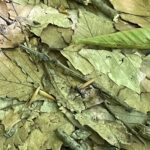
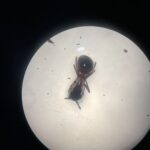
|
|---|---|
| Location | |
| Collection date | 06/06/2022 |
| Captive / Cultivated? | Wild-caught |
| Group | Pingry School |
| Observations |
Ant specimen was found in a terrestrial environment – decomposing leaves next to a decomposing log within The Pingry School’s forest. It was caught at the beginning of June 2022 (start of Summer/end of Spring), around noon. Temperature was 23.9 degrees celsius. Attached is a picture of the place I found the Ant in (with the ant in the picture as well). |
| Putative identification | Arthropoda Insecta Hymenoptera Formicidae Camponotus Camponotus chromaiodes |
Methods |
|
| Extraction kit | DNeasy (Qiagen) |
| DNA extraction location | Whole arthropod |
| Single or Duplex PCR | Single Reaction |
| Gel electrophoresis system | Standard electrophoresis system |
| Buffer | TAE |
| DNA stain | SYBR Safe |
| Gel images |
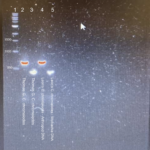
|
| Protocol notes | The gel contains me and my lab partner’s DNA – my Insect and Wolbachia DNA are in lanes 4 and 5 respectively. Lane 1 – DNA Ladder Lane 2 – Partner’s ant Lane 3 – Partner’s wolbachia test Lane 4 – My Ant Test Lane 5 – My Wolbachia test Analysis: The expected fragment for both Wolbachia 16S and Arthropod CO1 both showed up, in lanes 5 and 4 respectively. Wolbachia 16S has a base pair length of 438 base pairs, and in my gel’s lane 5 there is a band under the 500 base pair DNA ladder band – indicating the expected fragment. Arthropod CO1 has a base pair length of 708 base pairs, and in lane 4, there is a band between the 1000 base pair and 500 base pair length bands – indicating the expected fragment. DNA Sequencing further supported the identification of Carpenter Ant and + Wolbachia DNA, as when I input my sequences into BLAST, we observed very strong matches for both Wolbachia and Carpenter ant DNA. |
Results |
|
| Wolbachia presence | Yes |
| Confidence level | High |
| Explanation of confidence level | My protocols worked as expected. I had minimal problems with the protocol, and I had bands for both Insect and Wolbachia DNA in the gel. Additionally, our classroom sent our samples to be sequenced, and the sequencing that got returned further confirmed my confidence – I input my sequences into BLAST, and I got very good matches with my sequence. |
| Wolbachia 16S sequence | Download FASTA
Download AB1
GCTCGTGTCGTGAGATGTTGGGTTAAGTCCCGCAACGAGCGCAACCCTCATCCTTAG TTACCATCAGGTAATGCTGGGGACTTTAAGGAAACTGCCAGTGATAAACTGGAGGAAGGTGGGGATGATGTCAAGTCATC ATGGCCCTTATGGAGTGGGCTACACACGTGCTACAATGGTGGCTACAATGGGCTGCAAAGTCGCGAGGCTAAGCTAATCC CTTAAAAGCCATCTCAGTTCGGATTGTACTCTGCAACTCGAGTGCATGAAGTTGGAATCGCTAGTAATCGTGGATCAGCA CGCCACGGTGAATACGTTCTCGGGTCTTGTACACACTGCCCGTCACGCCATGGGAATTN
BLAST at The Wolbachia Project BLAST at NCBI
|
| Arthropod COI sequence | Download FASTA
Download AB1
TGGCTCCTCTATAAGAATAATCATTCGACTAGAGTTGGGATCTCCTGATTCACTAATTCTTAATGATC AAACTTTCAATACCATCGTTACAAGTCATGCTTTTATTATAATTTTTTTTATAGTTATACCTTTTATAATTGGGGGATTT GGTAATTTTTTAATTCCCCTTATACTAGGATCTCCTGATATAGCTTACCCCCGTTTAAATAACATAAGATTTTGATTACT TCCCCCATCGATCTCCTTATTAATCCTAAGAAATTTTATTAATGAAGGATCTGGAACTGGTTGGACTGTCTACCCCCCTC TATCATCAAATACCTTCCATAGTGGCCCCTCTATTGACCTGACTATCTTTTCTCTCCATATTGCTGGTATATCCTCAATT ATAGGAGCAATCAATTTTATTTCAACAATTATAAATATACATAATTCCAATATTTCCCTAGATAAAATTCCCTTATTAGT ATGGTCTATTCTTATTACAGCTATTCTCCTTCTTCTGTCCCTACCTGTTCTAGCAGGAGCTATTACAATACTACTAACAG ACCGAAATCTTAATACTTCATTTTTC
BLAST at The Wolbachia Project BLAST at NCBI
|
| Summary | The Camponotus chromaiodes was found to be postive for Wolbachia. |
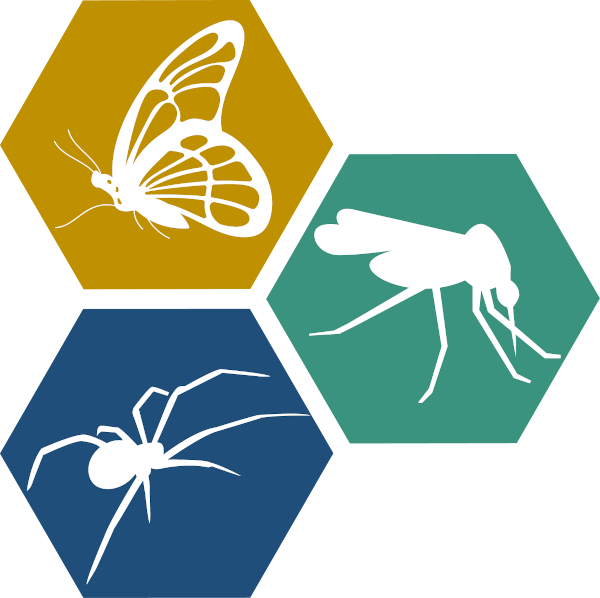 European Paper Wasp
European Paper Wasp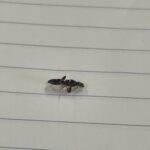 Woodworm Ant
Woodworm Ant